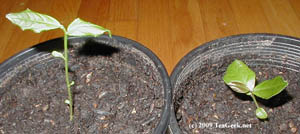So riddle me this:
I’ve been doing tea education for at least part of my income since 2003. I’ve encountered a number of challenges along the way and I’m curious if the tea people here would have any good ideas.
First, I’ve found that one of the main barriers to being a teacher in the field of tea is that the vast majority of English speakers don’t even know enough about it to realize that you CAN learn something about tea. I can’t count the number of times I’ve been asked what I do and said, “I’m a tea educator” or “I’m a tea teacher.”
The other person looks at me blankly and says, “A what? What do you mean?”
“I teach classes about tea.”
“Tea? Like the drink? What do you mean you teach classes about it?”
It’s hard to get people to sign up for a class that they can’t even comprehend what it is, let alone why they might want to take it.
Second, it seems that many people in the tea industry (again, my bias is the English speaking world, primarily USA) just don’t care about accuracy. It seems to me that the typical tea business person is very nice and very well meaning, but essentially read a few of the popular tea books such as Norwood’s New Tea Lover’s Treasury, realize how much more they know about tea than the average person, and then rely on their suppliers to tell them anything else they need to know. The end. Very few try to verify what they’re told. Very few actually seek out additional tea information. And so half-truths, mistakes (original, inherited, or amplified), little white marketing lies, and other forms of misinformation get circulated over and over again and become orthodoxy. That leaves an army of nice, well-meaning people who consider themselves experts out there, spreading lots of believable-but-incorrect information about tea.
How does one responsibly educate about tea? How can tea people tip the balance towards accuracy? What can tea educators do to more effectively move people along the path so many of us have been on–from grocery store teabags to more quality teas, and finally to a place where we realize that there’s a ton of interesting stuff to learn about tea…and that it’s enjoyable to do it?   Is good, accurate information something that the industry as a whole needs to work on providing, or is it something that tea customers need to demand? Or does it even matter if “experts” are teaching (and customers believing) stuff that just isn’t so?
I have my own ideas on some of these, but I’m curious what others think. Leave a comment and let me know your opinion!


 SM: Currently, and this is subject to change, is the white tea I have been producing. A close second would be Onomea Tea’s orthodox black tea. (And yet I need to reserve a spot for an oolong too, but which one? and if I had to include a green it would be a gyokuro, which we learned how to make from a Japanese master.)
SM: Currently, and this is subject to change, is the white tea I have been producing. A close second would be Onomea Tea’s orthodox black tea. (And yet I need to reserve a spot for an oolong too, but which one? and if I had to include a green it would be a gyokuro, which we learned how to make from a Japanese master.)
 Some like the flavor of sun tea for exactly that reason–it’s more mild than tea made the usual way. If that’s the case, make your tea using a cold-brewing process. Put the leaves in water and put it in the fridge overnight. Too cold for most microbes to flourish, but the added time allows for a similar milder tea flavor even at the lower temperature. Update: The image I’ve added shows the same tea, Dong Fang Mei Ren (aka Bai Hao Wulong, or Oriental Beauty). The cup on the left was brewed overnight in the fridge, while the cup on the right was brewed hot to ISO standards.
Some like the flavor of sun tea for exactly that reason–it’s more mild than tea made the usual way. If that’s the case, make your tea using a cold-brewing process. Put the leaves in water and put it in the fridge overnight. Too cold for most microbes to flourish, but the added time allows for a similar milder tea flavor even at the lower temperature. Update: The image I’ve added shows the same tea, Dong Fang Mei Ren (aka Bai Hao Wulong, or Oriental Beauty). The cup on the left was brewed overnight in the fridge, while the cup on the right was brewed hot to ISO standards.